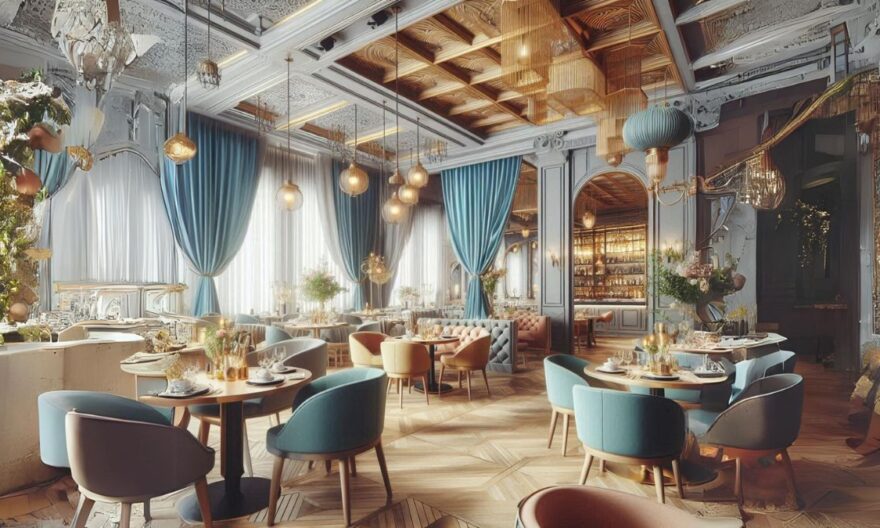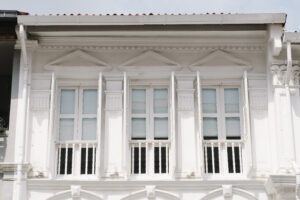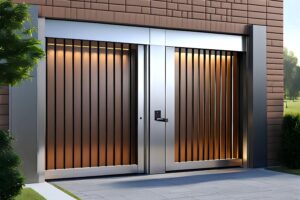
A memorable dining experience encompasses much more than delicious food, that’s for sure. The success of a theme-based restaurant heavily relies on the interior design that manifests the concept and ensures that the patrons are first and foremost fed and well but also completely immersed in the environment appropriate for the type of cuisine.
Consequently, the design process is a thoughtful endeavor that requires planning, creative thinking, and expertise – a job for an interior architecture firm Singapore. Since the overall competitive atmosphere in Singapore’s restaurants is competitive and diverse, there is a chance to outperform competitors with excellent restaurant interior design.
Therefore, this is a guide on how to turn a thematic concept into reality.

Understanding the Theme:
The essential first step in developing a theme-based restaurant interior design is achieving a profound understanding of the chosen concept. It does not matter if people want to recreate a 1950s diner, an intergalactic space station, or a bamboo hut by the beach. For the gist, the theme should be clear, engaging, and complete. Moreover, everything else will link to this understanding: deciding which color to paint the walls, which type of furniture to use, how to put up the lights, or which decorations would be best.
Defining the Concept Precisely:
Being precise is crucial when defining the concept. It is necessary to develop mood boards, make sketches, and, in general, compile many features of the aesthetic and ambiance that will help people measure expectations. Engaging with an interior architecture firm in Singapore that has worked on many projects and solutions could help people determine what “works” means in several contexts.
Spatial Planning: Zoning and Seating Arrangements
Zoning means the division of your restaurant into zones tailored to specific purposes in the context of your general theme. Different dining areas, waiting areas, bar zones, and kitchen areas can be included. A zoning plan should work to ensure the restaurant’s operation as a whole and consider how each space contributes to the guest’s overall dining experience. Dining zones are the places where guests dine or drink primarily, so these rooms should be most themed.
Dining and Waiting Areas:
For instance, the main styled dining area of the medieval restaurant is a large hall with a round and long banquet table with wooden benches. The themed chairs can have high separate backs for the medieval ambiance; guests should be invited to feel like they are at a real meal. The waiting spaces should be related to the arrival experience. The themed waiting area in the styled restaurant is designed as a king’s chair and has arrangements like the royal banquet hall. The royal chairs can be luxurious with soft pillows, or the pillows may also be replaced by chenille. The walls can be dramatized by tapestries or have armor or swords on display.
Bar Area Design:
The bar is arguably the most traditional focal venue point in a restaurant. Given that the modern cafe’s name is the Rustic Barrel, the bar will be an excellent bait for socialization and interaction among guests. The wooden barrels for both decoration and primal aesthetics, matched with wrought iron fixtures and dim lighting, would create the perfect atmosphere for a medieval-inspired restaurant.
Seating Varieties and Kitchen Design:
A variety of seats, such as barstools and high tables, would be preferable, as they offer a venue for people who want a more informal dining experience. The kitchen is usually hidden from patrons, but its design is critical for seamless service. An open kitchen, which is an increasingly popular model in the industry, can be advantageous from a design standpoint, particularly if it offers a thematic orientation.
Table Arrangements
A large open hearth, for example, could be used as a central focus point for the restaurant’s medieval design. Staff uniforms and kitchenware should complement the theme or color palette, adding to the overall design cohesiveness. The manner in which tables are arranged in the restaurant is vital in planning, as it determines how well diners may enjoy their time and the overall dining experience. Given the nature of a social setting like a restaurant, tables should be arranged in a way that can be moved to accommodate parties of various sizes and needs while maximizing design functionality.

Design Elements: Materials, Color and Furniture
The materials and colors you choose will greatly affect the vibe. In a nautical restaurant, blue and white dominate, and checkered-blue rugs give off the feeling of being on a boat. Weathered wood and metal accents are common. The interior architecture firm Singapore will offer access to an array of available materials and finishes to help enhance the on-theme ambiance. The university can help you find the ideal furniture, which should be both comfortable and functional while also matching the ambiance.
Custom-designed furniture can be incredibly cool. Sit on retro chairs and in front of retro tables in a vintage café or enjoy minimalist style with modern streamlined furniture. The fixtures will also help set the mood, especially in terms of lighting. What do you want to draw attention to or conceal gently? Soft, warm lighting may be nice and cozy, and brighter, cooler lighting may be modern and a little clinical.
Detailing, Décor & Branding:
Attention to detail is what makes restaurant interiors great. It can be the art on the walls and the settings on the tables. The decor must be carefully picked to support the theme without making the place look stuffed. Small hints such as themed pictures on the walls, little props, and peculiar tableware matter a lot. For instance, a jungle-looking restaurant might have much greenery, animal prints everywhere, and nature art pieces.
Branding should be present in the design as well. Even the restaurant menu, employee uniform, and logo should hint at the concept and thus help to embody its brand. This way, the concept is supported, and the client is made to remember the experience.
Also Read: Explore Functionality and Sustainability of Top Architecture Firms in Singapore


